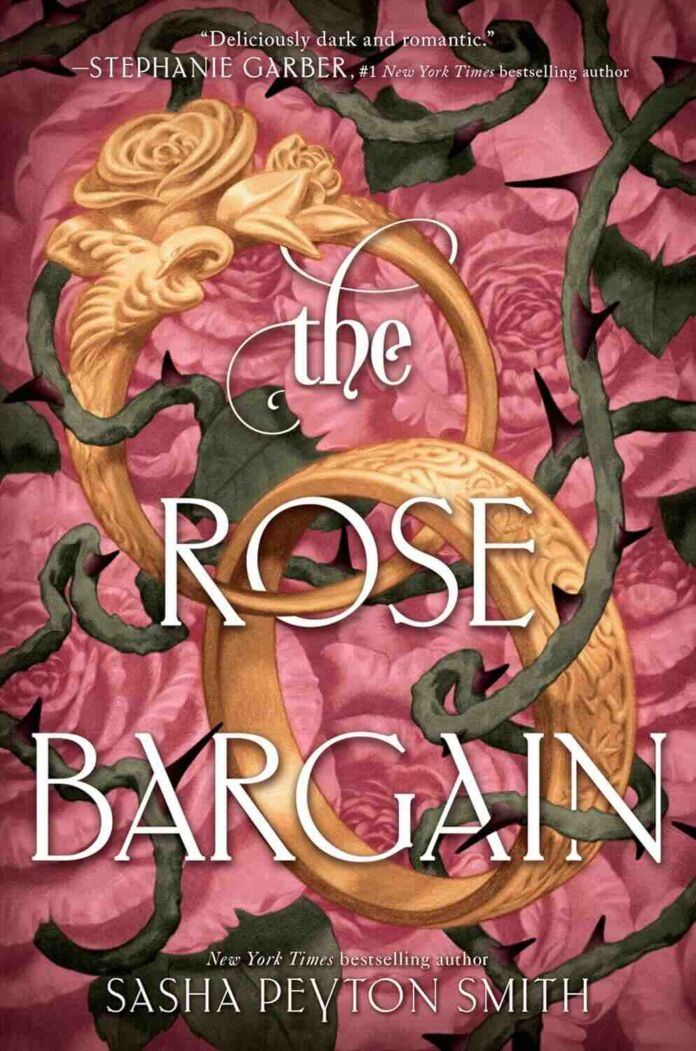In Sasha Peyton Smith’s latest novel, The Rose Bargain, readers are transported to an alternate Victorian England where the immortal fae Queen Moryen has ruled for over four centuries. This captivating tale weaves together elements of historical fiction, dark fantasy, and romance to create a story that is both familiar and refreshingly unique.
Plot and World-Building
The story centers around Ivy Benton, a young woman from a once-prestigious family now teetering on the edge of social and financial ruin. In this alternate England, every citizen is granted one bargain with the fae queen—a system that has created a complex social hierarchy based on what people are willing to sacrifice for their desires.
Smith’s world-building is meticulous and atmospheric. The author has crafted a convincing alternate history where the fae invasion during the War of the Roses led to a complete restructuring of English society. The bargaining system is particularly well-conceived, with each trade having unexpected consequences that reflect the traditional warnings about dealing with the fae.
Character Development
Strengths
The character development is one of the novel’s strongest aspects. Ivy is a compelling protagonist whose determination to save her family drives her to take increasingly dangerous risks. Her relationship with her sister Lydia is particularly well-drawn, full of the complicated love and resentment that often characterizes sibling relationships.
The supporting cast is equally well-developed:
- Prince Emmett emerges as a complex character whose rakish facade masks deeper wounds
- Prince Bram’s true nature unfolds in masterfully subtle ways
- The other contestants, particularly Faith, Marion, and Greer, each have distinct personalities and motivations
Areas for Improvement
While most characters are well-developed, some of the antagonists, particularly certain members of the fae court, could have been given more depth to avoid falling into familiar tropes of fae malevolence.
Romance and Relationships
The romantic elements of the story are skillfully handled, with the central love triangle between Ivy, Emmett, and Bram being both engaging and unpredictable. Smith avoids common YA romance pitfalls by grounding the relationships in genuine emotional connection rather than mere physical attraction.
Writing Style and Pacing
Smith’s prose is elegant and atmospheric, perfectly capturing both the glittering surface of fae-ruled London and its darker undercurrents. The pacing is generally well-managed, though some readers might find the middle section slightly slower as the competition unfolds.
Notable Strengths:
- Rich, sensory descriptions
- Sharp dialogue
- Effective use of multiple perspectives
- Strong emotional resonance
Themes and Depth
The novel explores several compelling themes:
- The true cost of power and ambition
- The complex nature of family loyalty
- The price of freedom versus security
- The dangerous allure of perfection
Critical Analysis
What Works Well
- Political Intrigue: The machinations of the fae court and the human nobility are intricately woven and genuinely surprising.
- Historical Integration: The alternate history elements are thoughtfully integrated with real historical events.
- Character Relationships: The dynamics between characters are complex and evolving, particularly among the competition contestants.
Areas for Improvement
- Pacing: Some of the competition trials could have been more evenly spaced throughout the narrative.
- World-Building Details: Certain aspects of how the fae rule affects everyday life could have been explored more deeply.
- Secondary Character Development: While the main characters are well-developed, some secondary characters could have been given more depth.
Comparison to Other Works
Fans of Holly Black’s The Cruel Prince will find familiar elements in Smith’s portrayal of the fae, though The Rose Bargain takes a unique approach to fae politics and power dynamics. The competition aspect may remind readers of Stephanie Garber’s Caraval series, but with a darker edge.
Impact and Significance
The Rose Bargain stands out in the YA fantasy genre for its sophisticated handling of political themes and its nuanced exploration of power dynamics. Smith’s previous work, The Witch Haven, demonstrated her ability to blend historical and supernatural elements, but this novel shows significant growth in both scope and execution.
Final Verdict
The Rose Bargain is a good read for its compelling characters, intricate plot, and atmospheric world-building. While there are some areas that could be strengthened, the novel’s strengths far outweigh its weaknesses.
Recommended for:
- Fans of fae fantasy and historical fiction
- Readers who enjoy political intrigue
- Those who appreciate complex female protagonists
- Anyone interested in unique takes on alternate history
May Not Appeal to:
- Readers seeking light fantasy
- Those who prefer straightforward romance
- Fans of fast-paced action throughout
Looking Forward
As the first book in a planned duology, The Rose Bargain sets up an intriguing world and compelling conflicts that leave readers eager for the conclusion. Smith has created a rich foundation for exploring deeper themes and consequences in the sequel.
Overall Assessment
The Rose Bargain successfully combines elements of historical fiction, fae fantasy, and romance while maintaining its own unique identity. Smith’s attention to character development and world-building creates an immersive reading experience that will stay with readers long after they turn the final page.
The novel’s greatest strength lies in its ability to take familiar elements—fae bargains, competition plots, forbidden romance—and combine them in fresh and unexpected ways. While there are areas where the story could be tightened or expanded, the overall experience is thoroughly engaging and promises an exciting conclusion in the second book.





